Mesothelioma Symptoms
Mesothelioma Symptoms
- Mesothelioma presents very few early symptoms in patients, and late stage symptoms can sometimes mirror non life-threatening conditions.Overview Mesothelioma Symptoms.
Patients with mesothelioma experience a variety of symptoms that vary by type and stage of the cancer. Symptoms can be caused by irritation or fluid build-up in the lungs or stomach caused by the cancer growth. Although mesothelioma is rare, anyone displaying these symptoms should see a doctor immediately, especially if they have been exposed to asbestos in the past.
 Pleural Mesothelioma The most common symptoms for pleural mesothelioma are chest pain, pleural effusions (fluid build-up), painful breathing, and a persistent cough.
Pleural Mesothelioma The most common symptoms for pleural mesothelioma are chest pain, pleural effusions (fluid build-up), painful breathing, and a persistent cough. 
Peritoneal Mesothelioma
The most common symptoms for peritoneal mesothelioma are stomach pains, ascites (fluid build-up), unexplained weight loss, and loss of appetite.
Pericardial Mesothelioma
The most common symptoms for pericardial mesothelioma are chest pains, pericardial effusion (fluid build-up), and heart murmurs.
Pleural Mesothelioma Symptoms
Pleural mesothelioma is caused by inhaling asbestos fibers, which become trapped in the lining of the lungs, known as the pleura. These microscopic fibers cause irritation and inflammation in the pleura. This inflammation causes thickening in the layers of the pleura and the buildup of fluid around the lungs (pleural effusion). The buildup of fluid and thickening of the lining surrounding the lungs prevents the lung from fully expanding. This causes chest discomfort and painful breathing.
Early Stage Pleural Mesothelioma Symptoms (Stage 1 & 2)
Patients with early stages of pleural mesothelioma do not exhibit many symptoms, and those that do show are not specific to the disease. Symptoms common in the early stages of this disease are shortness of breath (dyspnea), chest pain, and persistent coughing. These are similar to symptoms of various other disorders, such as pneumonia, common cold, asthma, influenza, and Chronic Obstructive Pulmonary Disease (COPD). Pleural effusions and inflammation in the lining of the lungs are the main source of discomfort associated with mesothelioma, but are also linked to pneumonia and COPD. Up to 25% of patients have symptoms like dyspnea and chest pain for approximately 6 months before seeing a doctor.
Pleural thickening is another result of pleural mesothelioma that is common in other diseases. This is the caused by the scarring of the pleura. It causes a loss of elasticity in the lungs, which is essential for the lung to expand for normal breathing. Pleural thickening can also be caused by tuberculosis, pleurisy, and empyema (infection in the lung that causes a buildup of pus in the pleura). However, in mesothelioma, this is specifically caused by scarring of the pleura due to asbestos.
Other less common symptoms that may be evident in early stages are fatigue, unexplained weight loss, fever, body aches, and lumps under the skin on the chest.
Late Stage Pleural Mesothelioma Symptoms (Stage 3 & 4)
Late stages of pleural mesothelioma have more specific symptoms, but also include symptoms from the earlier stages. In stages 3 and 4, symptoms still include difficulty breathing, chest pains, and coughing, but these symptoms may be more severe. However, symptoms specific to pleural mesothelioma begin to emerge in these stages. This is when most patients are diagnosed. These symptoms may include:
- Fever and/or Night Sweats
- Shortness of Breath (dyspnea)
- Painful Breathing
- Fatigue
- Anemia
- Persistent Pain in the Chest or Rib Region
- Persistent Coughing
- Coughing up Blood (Hemoptysis)
- Difficulty Swallowing (Dysphagia)
- Pleural Effusions
Peritoneal Mesothelioma Symptoms
Peritoneal mesothelioma shares some symptoms with pleural mesothelioma, such as fatigue and unexplained weight loss. However, there are considerably fewer cases compared to pleural mesothelioma. Peritoneal mesothelioma does not have an accepted stage classification system, so the time symptoms occur varies with each patient.
Pleural Mesothelioma Misdiagnosis
Misdiagnoses are common because symptoms are not unique to pleural mesothelioma. These cases are often misdiagnosed as influenza or pneumonia in the earlier stages. Chest pain and shortness of breath are very common in the early stages of the disease, and up to a third of patients have experienced shortness of breath without chest pain. Some patients reported the chest pain they experienced was dull and insignificant.
Overall, symptoms of pleural mesothelioma vary by stage and are contingent upon the patient. Some patients show virtually no symptoms until the late stages of mesothelioma, whereas some experience symptoms in Stage 1.
Peritoneal Mesothelioma Misdiagnosis
Misdiagnosis of peritoneal mesothelioma is also common. There are similar reasons for misdiagnosis as there are with pleural mesothelioma. That is, non-specific symptoms and the rarity of mesothelioma. Peritoneal mesothelioma is often misdiagnosed as a hernia or Irritable Bowel Syndrome (IBS).
Pericardial Mesothelioma Symptoms
Pericardial mesothelioma makes up less than 1% of mesothelioma cases, and the exact origin of the disease is unknown. Symptoms associated with pericardial mesothelioma are:
- Chest Pain
- Pericardial Thickening
- Irregular Heartbeats
- Cardiac Tamponade (Bleeding in the Pericardium)
- Dyspnea (Difficulty Breathing)
- Pericardial Effusion (Fluid Buildup)
Metastatic Symptoms
Symptoms may not appear in the primary mesothelioma site. This is usually a sign of metastasis, which is the spread of cancerous cells to other regions of the body. The most common metastatic symptoms of mesothelioma are:
- Hemoptysis – coughing or spitting up blood
- Laryngeal Nerve Palsy – damage to the throat resulting in paralysis of the voice box
- Nerve issues – nerve malfunction in arms
- Horner’s Syndrome – a conjunction of eye-related issues such as a drooping eyelid, constriction of pupils, decreased tear production and conjunctival redness.
Early Detection Mesothelioma Symptoms
Patients who experience symptoms of mesothelioma should talk with their doctor to properly diagnose their condition. Learn about what methods are used to detect and diagnose mesothelioma.
source: http://urdoctor-info.blogspot.com/2013/10/mesothelioma-symptoms.html



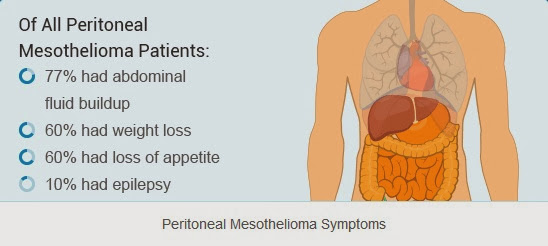
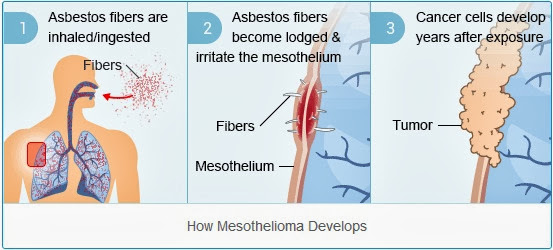


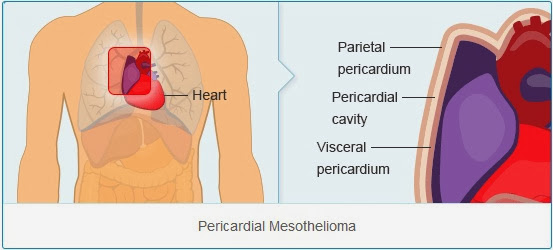
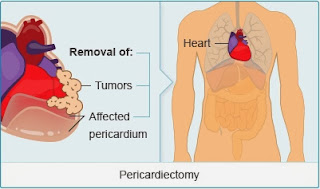

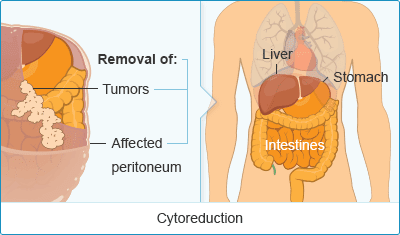
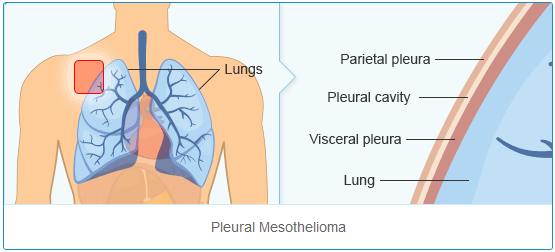
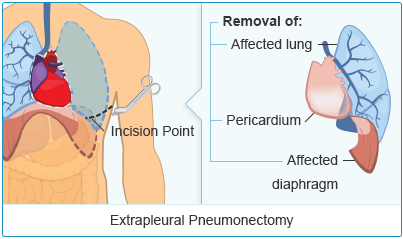
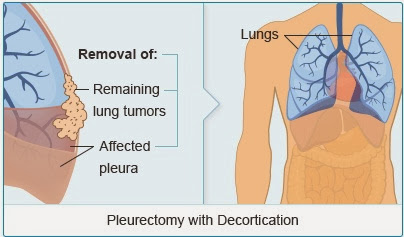
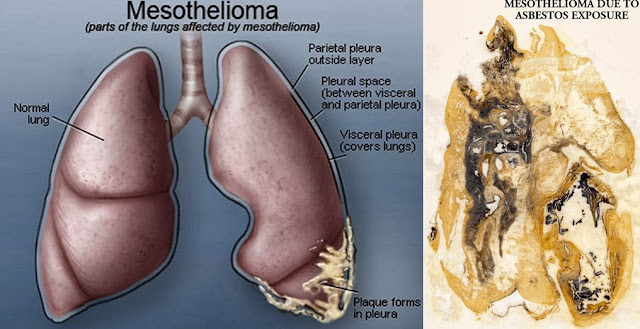




0 comments: